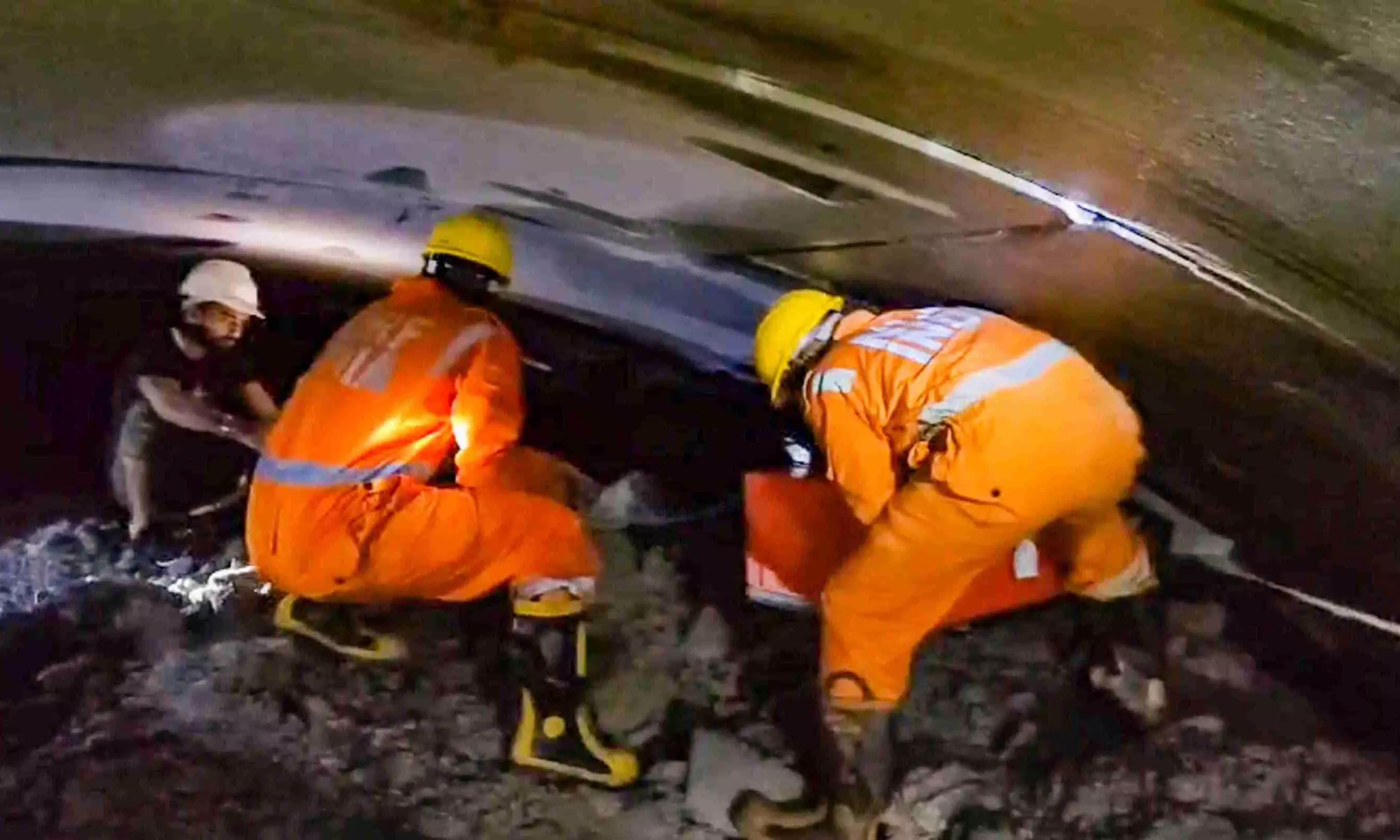
Telangana SLBC tunnel tragedy: A month on, no trace of 7 missing workers
Even after massive clearing of debris, only 1 body has been found; others may be buried in rubble in cave-like formation behind tunnel boring machine: sources

On February 22, the Srisailam Left Bank Canal (SLBC) tunnel collapsed, trapping eight workers inside. The incident occurred near Domalapenta in Nagarkurnool district, at the 14th kilometre point of the SLBC inlet tunnel. At the time of the ceiling collapse, around 40 workers were inside; 32 of them managed to escape.
One body recovered
Of the eight trapped workers, only the body of Gurpreet Singh, the tunnel boring machine (TBM) operator, has been recovered by the rescue teams. Despite ongoing efforts by experts and personnel from 12 different departments, the bodies of the remaining seven — Manoj Kumar, Srinivas, Sandeep Sahu, Jagtaj Singh, Santosh Sahu, Anuj Sahu, and Sunny Singh — are still missing.
The collapse created a massive 10-metre-wide cavity in the tunnel ceiling.
Despite relentless rescue operations carried out in five shifts by personnel from the Indian Army, Border Roads Organisation, NDRF, SDRF, Singareni Collieries, National Centre for Seismology, Indian Navy marine commandos, robotics teams, Hydra units, NGRI, South Central Railway, rat-hole miners, Anvi Robotics, cadaver dog squads, and the JP company, no further bodies have been located.
Also Watch: Ground report: Ran 13 km to safety, now forced back into SLBC tunnel, say workers
Restricted zone
Debris inside the tunnel has been cleared up to the designated danger zone. The tunnel boring machine has been dismantled in three stages, and its remnants removed.
Even after clearing debris up to the D2 point, no additional remains have been found, a senior NDRF official who wished to remain anonymous told The Federal Telangana. The officer speculated that the bodies might be buried in the rubble inside a cave-like formation behind the TBM.
Authorities from NGRI and GSI have warned that the loosened ground in the area could cause another collapse, prompting officials to declare the cavity a restricted zone. Army officials involved in the operation believe the bodies may still be lodged in this cave.
Review meetings
Army General Commanding Officer Major Ajay Mishra, Special Chief Secretary for Disaster Management Arvind Kumar, Nagarkurnool District Collector Badavath Santosh, and SP Vaibhav Gaikwad Raghunath are conducting daily review meetings on the progress of the rescue operations. Discussions are being held with senior army officers and rescue team leaders regarding safety protocols and ongoing efforts inside the collapsed section of the tunnel.
As part of the search for the missing workers, parts of the TBM have been cut and removed. Alongside this, accumulated water inside the tunnel is being pumped out.
Specialised equipment has been used to cut and extract critical TBM components. The process of clearing sludge using water jets and transporting soil via conveyor belts continues. Oxygen cylinders are being supplied uninterrupted to the rescue teams. Ultra-thermal cutters have been used to dismantle TBM parts, and daily reviews focus on streamlining the operations and reinforcing safety measures to speed up the efforts.
Also Watch: SLBC tunnel crisis: 'Breakthrough expected in 12-24 hours'
Strict safety standards followed
Rescue operations are being carried out in accordance with strict safety standards, based on evolving conditions within the tunnel. High-capacity pumps are being used to remove seepage water that hinders the rescue.
Following the recommendations of Geological Survey of India officials, teams at the site are being kept on high alert. Large rocks inside the tunnel are being excavated and moved out using loco trains, while the soil is continuously cleared using conveyor belts.
The rescue work to retrieve the bodies is being carried out in five daily shifts — 7 am, 11 am, 3 pm, 7 pm, and 11 pm. Special Chief Secretary for Disaster Management Arvind Kumar told The Federal Telangana that dedicated rescue teams are working round-the-clock. A special communication system has been established to coordinate rescue efforts within the tunnel.
For 31 days now, government rescue teams from both state and central agencies have been working tirelessly, removing soil, steel, and rocks from the site without pause. Major Ajay Mishra, General Commanding Officer of the Telangana Andhra Sub-Area, commended their unwavering dedication.
This article was originally published in The Federal Telangana.
(The content above has been translated using a fine-tuned AI model. To ensure accuracy, quality, and editorial integrity, we employ a Human-In-The-Loop (HITL) process. While AI assists in creating the initial draft, our experienced editorial team carefully reviews, edits, and refines the content before publication. At The Federal, we combine the efficiency of AI with the expertise of human editors to deliver reliable and insightful journalism.)

